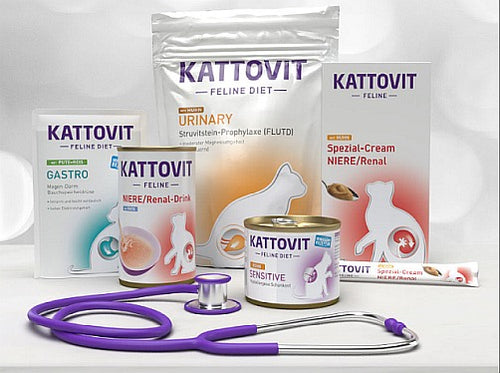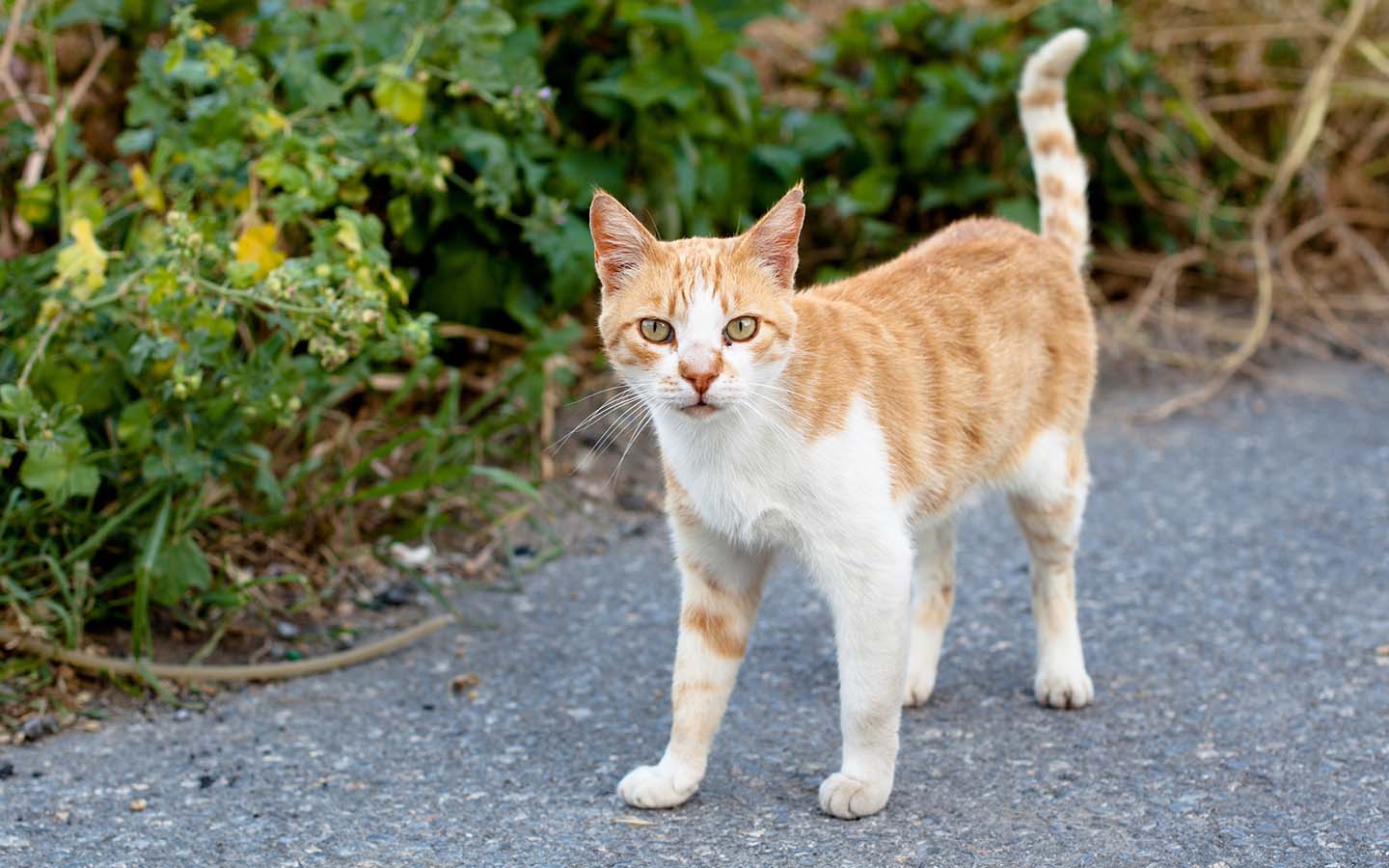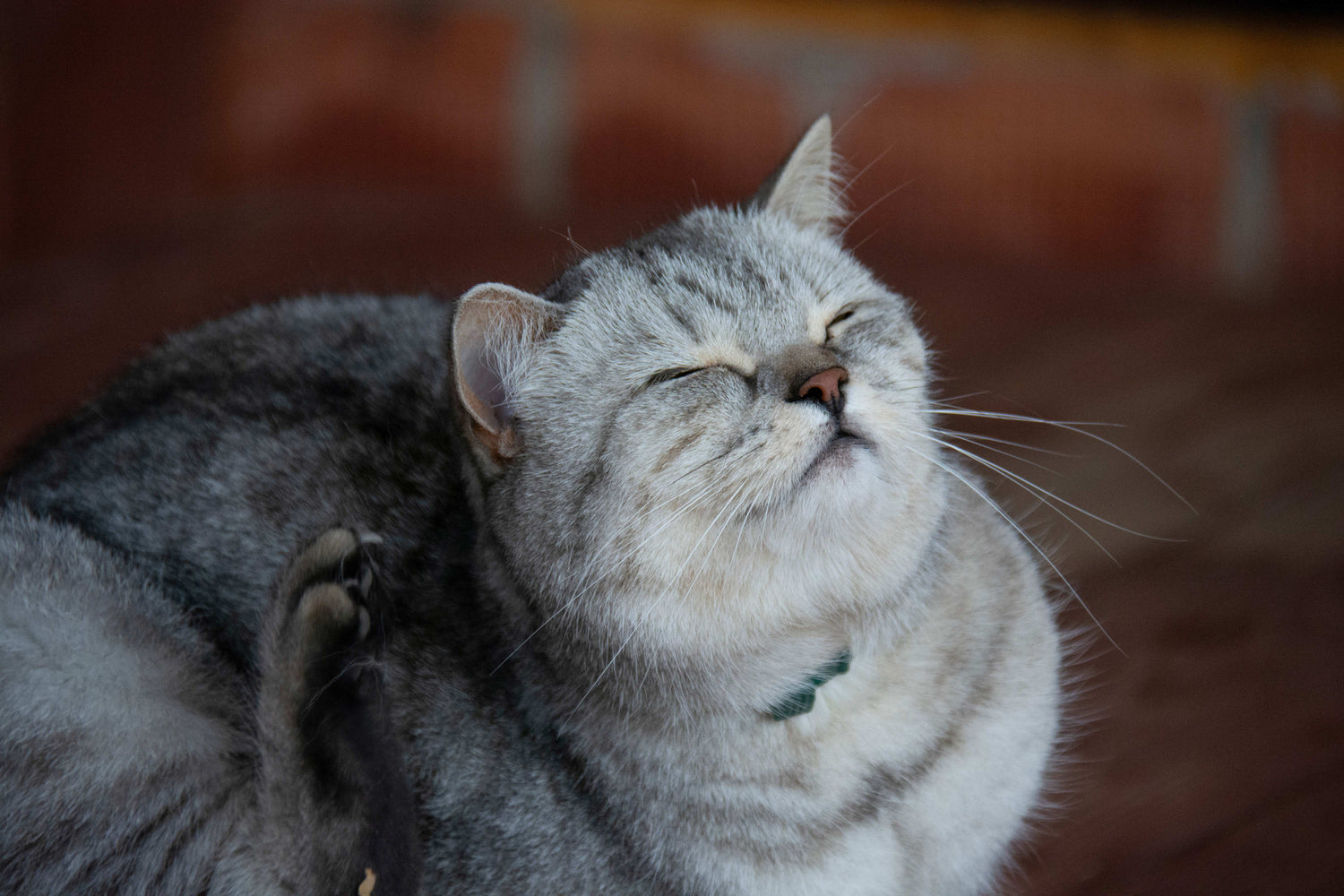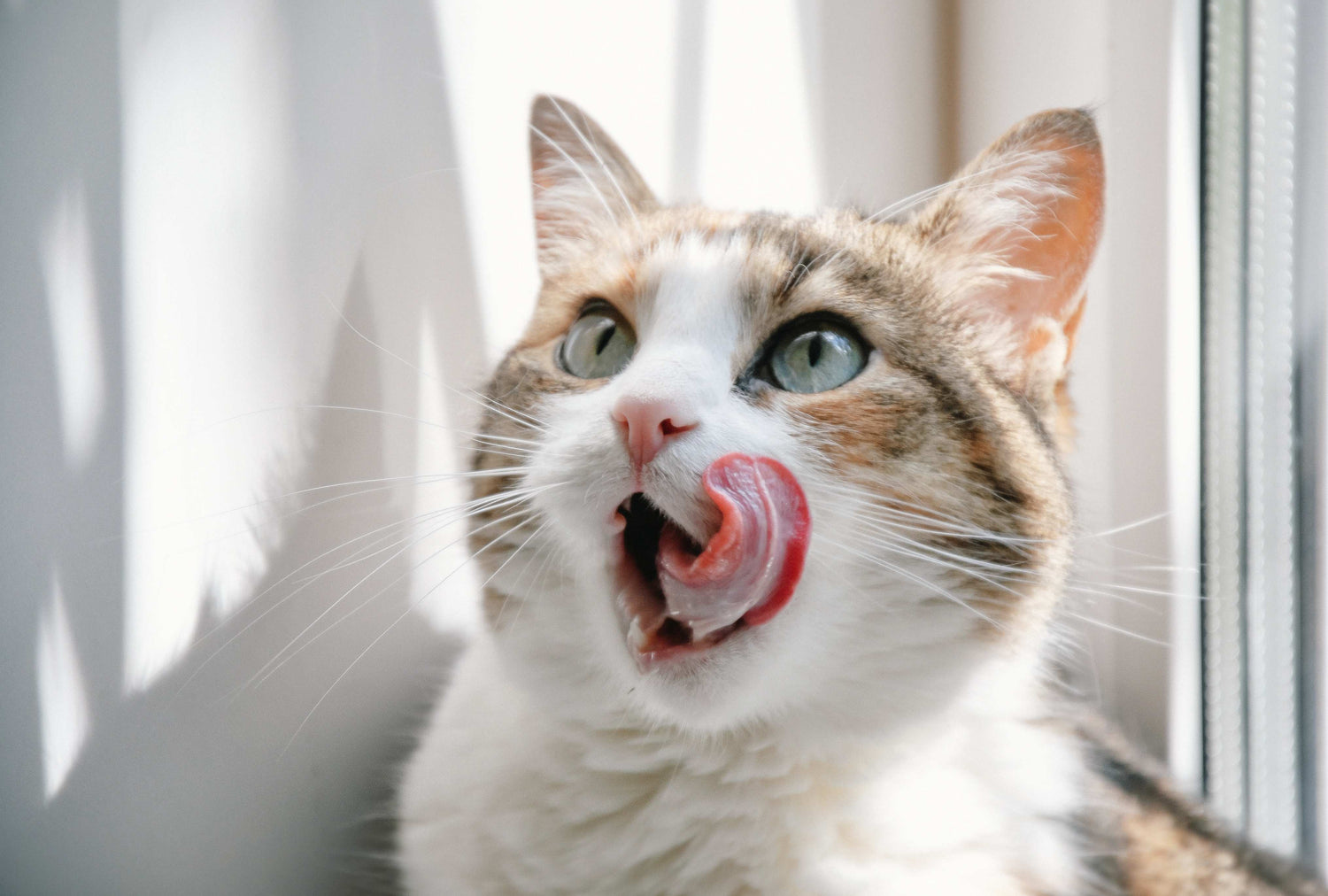Is your cat too thin?
If cats are too thin, this can lead to damage, just like with humans, and indicate serious causes. So if you notice that your pet has lost weight, or if you have just taken in a very slim cat, you should take a closer look. Here you can find out how to tell if your cat is too thin, what causes underweight and how you can fatten the animal up again.
The ideal weight of a cat
The weight of a cat depends on various factors, which is why it is not possible to set a general ideal weight. For example, tomcats usually weigh more than cats. But different breeds also weigh more or less. While a Maine Coon cat often weighs 9 kg, delicate Siamese cats sometimes weigh only 3 kg. Domestic cats, on the other hand, are in the middle at 4.5 kg. Kittens are still in the growth phase and are therefore slim in stature, while old cats have little appetite and are therefore usually thinner. Whether your cat is too thin is therefore not necessarily determined by its weight.
[Aufbaukur]
- If you know your cat's normal weight - for example, by having it weighed regularly at the vet - you can also check your pet's body weight at home. The most accurate way to do this is to use your cat's transport basket. To do this, place the box with the cat on the scales and then weigh the transport box without the animal. The difference between the two values is your cat's weight. If you notice that your cat has lost more than 500 g in weight in just a few weeks, you should definitely have a veterinarian determine the cause.
- If you don't know your cat's ideal weight, you can determine whether it is too thin by determining its body condition score: Look at your pet from above. Ideally, you will see a straight silhouette without any strong curves inwards or outwards. If the flanks curve strongly inwards, this is a sign of underweight; if they curve outwards, the animal could be overweight. The shape of the belly is also crucial. A small belly is perfectly normal; if there is no belly or it curves inwards, the cat is too thin. If the animal's pelvic bones are clearly visible, you can assume that it is underweight.
- While you can easily tell whether a short-haired cat is too thin by its shape, the fur of a long-haired cat distorts its body shape. The rib test can help here. You gently stroke the cat's ribs with a little pressure. If you can't feel any ribs, the animal is probably overweight. If you can feel the ribs clearly, this is a sign of underweight. Ideally, you will only feel the ribs slightly, as there is a thin layer of fat over them.
- If you notice that your cat is too thin, you should find out what caused the weight loss. Even if the causes can often be remedied, possible reasons for the underweight should be clarified early on, as an illness could also be behind the weight loss. A persistent lack of nutrients due to too little food intake also leads to organ damage and can make the cat ill.

Causes of Underweight in Cats
There are many reasons why cats are underweight. Weight loss can be caused by poor nutrition, age or illness. Many of the accompanying symptoms are similar, which is why it is not always easy to determine where the weight loss is coming from. In any case, it is important that you note down any behavioral abnormalities in your cat and take it to the vet if weight loss continues.
parasites
A common cause of underweight in cats is parasites. Outdoor cats that are not regularly dewormed and treated with antiparasitics against fleas, ticks and mites suffer from worms and Co. Street cats therefore often have dull, shaggy fur and suffer from Diarrhea . But indoor cats can also suffer from worm infestations if the owner brings them in on their shoes, for example. Another type of parasite is Giardia. These enter the cat's body via cysts in contaminated water or food. There they settle in the intestinal tract and cause diarrhea, loss of appetite and the associated weight loss.
diseases of the mouth and throat
Another reason for weight loss can be diseases in the cat's mouth and throat. Older animals are particularly often affected. Plaque or tartar can cause gum inflammation and pain. Eating is very unpleasant for the cats. The animals often refuse to eat at all and lose weight as a result. If your cat lets you examine it, you can try to take a look in its mouth. Otherwise, if you suspect a disease in the mouth or throat, get a vet for help.
Feline reactive lesions (FORL) are also very painful for cats. The body's own degradation cells (so-called odontoclasts) cause the destruction of the tooth's hard substance. At least one in three cats is affected by this - recent studies even show a frequency of almost 50% of all cats over five years of age.
Various viral diseases, such as feline leukemia (FeLV), feline infectious peritonitis (FIP), feline immunodeficiency virus (FIV) or pathogens of the cat flu complex can lead to serious inflammation in the cat's oral cavity and impair food intake.
gastrointestinal problems
Does your cat suffer from loss of appetite due to gastrointestinal problems Vomiting and diarrhea often occur as accompanying symptoms. If these remain undetected and untreated for a long time, the cat will quickly lose weight. If symptoms persist, you should definitely consult a veterinarian. In order to get the digestive problems under control in the long term and to prevent them, a product specially developed for such cases helps. diet food .
If the appetite is very good, the stool is very light and voluminous, and weight is lost, one of the possible causes is pancreatic insufficiency (exocrine pancreatic insufficiency). This is characterized by a partial or complete loss of enzyme secretion from the pancreas. In addition to replacing these enzymes with food, a low-fat diet can be helpful.
Pregnancy and Stress
Pregnant and lactating cats need a lot of energy. Pregnancy and motherhood can therefore lead to weight loss. It is important that the animal always has enough high-quality food available and that it actually eats it.
Stress leads to many behavioral changes in cats, including Loss of appetite . New living conditions such as moving house, a new playmate or a child can really put your pet under pressure. If he can't find a place to retreat to or has to share his bowl, he may refuse to eat. Cats need peace and quiet when eating - a noisy environment around the feeding area is therefore not conducive to the animal's appetite.
diabetes mellitus
Diseases can also be responsible for your cat’s weight loss. diabetes the energy supplier glucose is no longer or hardly absorbed into the cells. The body is then forced to use other energy sources: fatty tissue and protein. This means that the cat loses weight despite eating more. Only the vet can determine whether your animal has diabetes with appropriate tests. So if you notice fatigue and increased thirst in addition to weight loss, you should see a vet. If diabetes is diagnosed in time, your cat can still lead a largely healthy life. A reduced and protein-rich diet is a supportive measure to the treatment prescribed by the doctor. Nutrition is recommended. It is important that the energy content of the feed used is based on the nutritional status of the animal. Overweight animals should lose weight in a controlled manner, and animals that have already lost weight should not lose any more weight or should gain some weight again.
renal insufficiency
Kidney disease can also lead to loss of appetite, weight loss and increased fluid intake. Chronic renal failure is characterized by a progressive loss of function of the smallest functional units of the kidneys (nephrons), which means that substances that are excreted in the urine can no longer be adequately excreted. They then accumulate in the cat's body and cause, among other things, loss of appetite, increased urination and tiredness. If your cat shows similar symptoms, have it examined as soon as possible. If kidney failure is recognized early, the animal's quality of life can usually be improved with a low-protein and low-phosphate diet and medication.
feline leukemia
The infectious disease feline leukemia is another possible cause of weight loss. If you keep your cat alone in your home, the likelihood that it has feline leukemia is low. It could simply have been born with the disease or it could have caught the disease before moving in with you. So have a new animal tested for the feline leukemia virus (FeLV) before bringing it into the home with a cat that already lives with you.
The symptoms of feline leukemia are varied: Infection can cause loss of appetite, weight loss, fatigue, breathing difficulties, difficulty swallowing and inflammation of the oral cavity. Due to this variety of symptoms, only a FeLV test at the veterinarian can provide clarity. The infectious disease cannot be cured. However, symptomatic treatment is used to try to improve the quality of life and its duration.
Poor quality or incompatible food
Food can also be responsible for your cat losing weight. An intolerance or allergy can lead to a loss of appetite and the cat refusing to eat. Other possible symptoms in this context are vomiting, diarrhea, skin inflammation and respiratory problems. In case of food intolerance or allergy, hypoallergenic diet Remedy.
If your cat is too thin but otherwise appears alert and healthy, the food may not be of high quality. This means that it does not contain the necessary nutrients for the cat to build body mass.
Pay attention to the ingredients list on the food packaging. The statement "meat and animal by-products, of which at least 5% turkey" usually means that a large part of it consists of slaughterhouse waste such as skin or intestines and only a small part is actually turkey meat. So it is best to choose a food for your house cat that consists of about two-thirds meat. Sugar and grains are not recommended as plant-based ingredients. If at all, these two ingredients should only be present in very small quantities. Vegetables and carbohydrate-containing ingredients such as potatoes and rice should not make up more than 10%. For this, the cat needs minerals, vitamins and the amino acid that is essential for cats. Taurine in sufficient quantities.
When preparing your own feed rations, it is important to ensure that there is a sufficient supply of all the necessary ingredients, while also avoiding an oversupply of individual components. Veterinarians specializing in animal nutrition offer a ration check via appropriate internet portals.
How to help your cat gain weight again
Whether it's due to an illness, poor quality food or pregnancy: If your cat is too thin, it's important to get it back into shape. Avoid the first impulse to simply give your pet large portions. Even if the cat eats them, it may not be able to process them. You should instead feed it several small portions.
If inferior feed was fed, it is best to change the food . Make sure that the food has a high meat content and that it contains a lot of wet food. In this case, nutritional supplements are advisable, as they are designed to nourish undernourished and weakened cats and to eliminate deficiency symptoms. You can feed dry food in small amounts from time to time. But always make sure that you provide plenty of water. If your pet is picky or still doesn't have much of an appetite, stimulate it with tuna or a few treats on top of the wet food.
Cats don't eat based on taste, but on smell. By heating the food briefly in the microwave, the aroma intensifies and the cat reacts more strongly to it. A positive side effect: lukewarm food is also good for digestion. You should generally avoid cat food straight from the fridge. Plastic bowls also have a deterrent effect on many cats. These often smell unpleasant to the animal and spoil its appetite. So choose bowls made of glass or ceramic.
Since stress has a negative effect on the cat's hunger, a quiet feeding place is essential. Make sure that the food bowl is not in the immediate vicinity of loud equipment or in the middle of a passage. If the animal feels safe and does not have to worry about its food being stolen or that it is in danger, it will usually be happy to eat again. When it comes to feeding, a routine helps so that your cat knows when it is ready to eat. But a quiet feeding place is not the only thing that makes it feel good: lots of petting and letting off steam through playing also ensure that your pet relieves stress.









